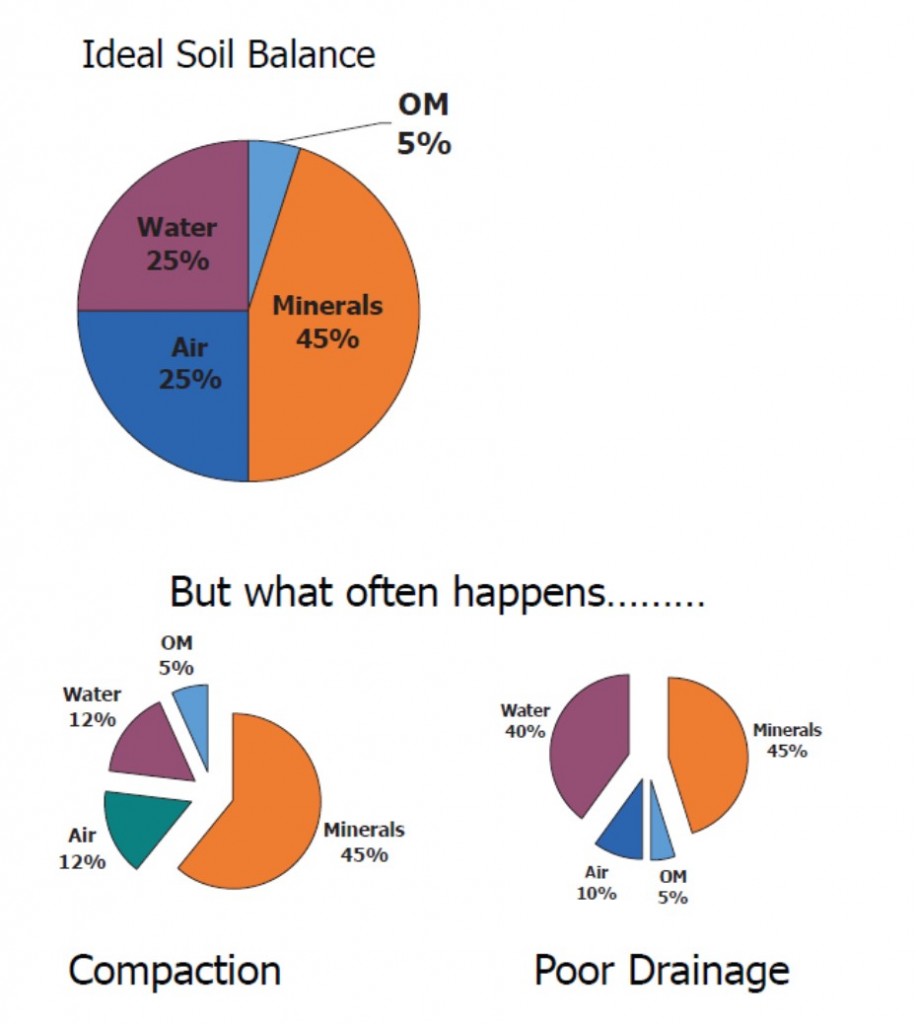When most people think of a corn plant, they think of the portion they can see – the part above ground – but did you know below ground growth on a corn plant is about equal to its above ground growth? As one leading agronomist would tell you, it’s often what’s going on below the surface that you should be most concerned about.
Let’s take for instance oxygen in the soil. As agronomist and Certified Crop Advisor Kelly Robertson explained, corn plants “breathe” from their roots underground.
“Roots, like people, take in oxygen and give off CO2 (carbon dioxide),” Robertson said. “In poorly drained soil there is limited oxygen and neither the roots nor the plants can grow to their full potential. They’re essentially suffocating.”
According to Robertson, when the soil is saturated water fills the air pores reducing or eliminating the amount of oxygen in the soil. Plants, like many living creatures, will not survive very long without oxygen, however they can survive longer without water and an even greater amount of time without nutrients or food.
“After just 24 hours (without oxygen) you can start to see death in a corn plant depending on stage of growth,” said Robertson.
Drainage helps bring the soil back to field capacity, or where the air pores in the soil have oxygen in them again, between the soil particles. As the water drains down it pulls oxygen into the soil, allowing the roots to begin breathing again and taking up nutrients.
“You can have a soil that is very fertile, but if you don’t have enough oxygen in the soil a plant can’t survive,” Robertson noted.
First and foremost the plant needs a proper air and water balance to breathe, but excess moisture in the soil also causes chemical reductions which can make vital nutrients unavailable.
You have probably heard that drainage does more for your field than remove excess water. It plays an important role in promoting healthy root growth and maintaining adequate soil balance which leads to higher yields. But have you ever wondered how drainage can accomplish all that? Join us as we talk to expert agronomists and take you on an in-depth look at the science behind the drainage system.
One example of this is denitrification of NO3 to N2, or a reduction that occurs causing nitrogen in the soil to be lost. As Robertson pointed out, this happens with more than just nitrogen.
“Micronutrients can get tied up or reduced in poorly drained soils. Even macronutrients can become unavailable in a soil that stays wet for too long,” explained Robertson.
Properly drained soil is key to ensuring plants have both the oxygen and the nutrients they need to produce a healthy crop.
Kelly Robertson
In addition to being a Certified Crop Advisor and Certified Professional Agronomist, Kelly Robertson has a Bachelor’s degree in Ag Education and Mechanization and a Master’s degree in Plant and Soil Science from Southern Illinois University at Carbondale. Kelly and his wife, Lori, farm and own Precision Crop Services in Benton, IL, an agriculture consulting firm providing a variety of services to farmers including soil fertility management, precision agriculture assistance and farm management.

